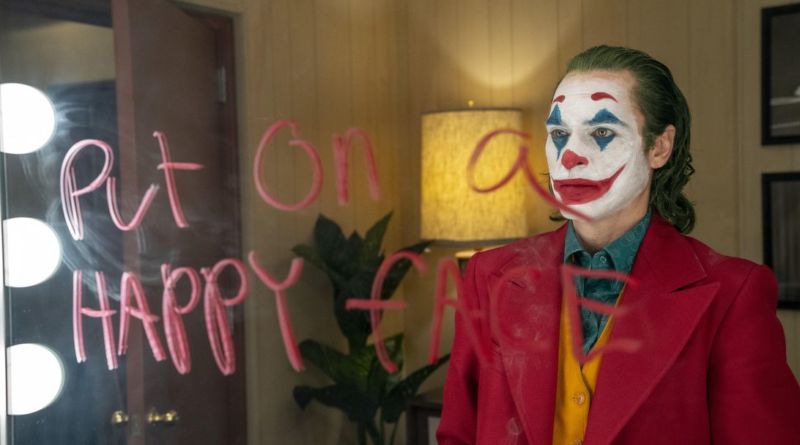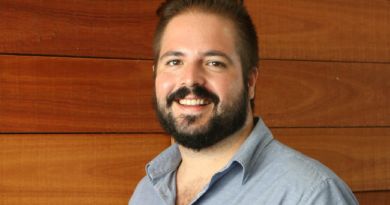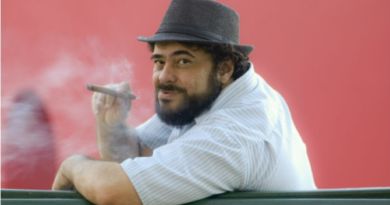From Arthur to the Joker: the invisible curve of the character
By Hermes Leal
The Oscar nominee for best adapted script, “Joker”, has a script very similar to the script for the film “Parasite”, Especially for its structure and development of the arc of the characters, being faithful to the theory of the three acts. The script of the two films has its quality and appeal for using as a strategy the transformations of the narrative and the character, following a theoretical scheme based on the Semiotics of Passions.
Semiotics offers an instrument for the screenwriter to build the dramatic arc of “Joker”, in the internal transformation and in the actions of the character Arthur, which are structured as a script through the same theory that showed the dramatic arc of “Parasite”, which also competes for the Oscars for best original script. This instrument allows to go beyond the known in the construction of character and in the dramatic structure of the script.
The first observation in the “Joker” script is about how the writers changed the character’s name. I have two versions of the original “Joker” script. In the first version, of April 2018, the character Arthur was signed as Joker, from the first to the last scene of the script. In the final version, of December 2018, the name of Joker was replaced by Arthur, as he was a character who, until the end of the script, did not have the characteristics of the villain in the Batman comics, from which he originated. Thus, whoever reads the script will see Arthur’s actions first and only at the end of the story will begin to read the Joker’s actions.
This way of writing has a reason, which reflects on the quality of the film, which originates from the script, the organization of the narrative and the internal and passionate journey of the character Arthur. In rewriting the script, the character demanded a mandatory deepening before he became a Joker, especially to strengthen his suffering, his feeling, and then improve his performances in the form of actions. And this is done under an arc of transformation from the character of Arthur to the Joker. And this arc is not only that of “acting”, but also that of “feeling”, a side that was not explored before in the construction of the script, other than in an intuitive way.
Arthur’s passionate curve, different from the action curve, is invisible and governed by “feeling”, it changes little by little, from this feeling of love for others, in the first act, which will become the passions of “anger” and “Resentment” in the second act. And that will trigger in yet another passion, “revenge”, in the closing of his bow, in the third act, when, instead of shooting himself, he shoots and kills the person he thinks to oppress and humiliate him.
In other words, this passage from Arthur to the Joker is a demonstration that changes like this (the script was almost completely rewritten and had more than 60 scenes cut until the final treatment) aim at focusing on the passion that governs Arthur’s actions. What will become an “arc” will be your passion, from the good guy to the bad guy, from individual to collective and social pain.
Arthur’s sensitive curve to become a Joker goes through a “contract” with his mother and his object of being a humorist, in the first act, a “manipulation”, in the second, about his origin, his father and his mother , and a “sanction”, in the third act, with the breach of contract with his mother, as well as the result of a narrative program of the search for success as a stand up comedian, which started and ended in the first act.
From the point of view of action and time, the acts are well distributed, with the first ending on page 36 of the script, when he is fired from his job, humiliated and discredited by no one taking into account what he feels, thinks and does. In the next scene, the second act begins, which goes to page 72, when he finishes his search for the truth, regarding his mother and father, and in the third act, the sanction is closed; after killing his mother, in the second act, now Arthur is preparing for his “grand final”, participating in a live stand up show on TV.
From the point of view of his passionality, the arc occurs when Arthur’s pathetic state of soul leaves a calm subject, in the first act (despite the disease of laughing out of turn, taking seven pills a day and visiting a psychiatrist regularly), to an angry, depressed and revengeful state at the end of his journey, due to the contempt that people have for him. His passions are transformed throughout his journey, motivate his actions and generate his dialogues, closing a complete arc at the end, of Arthur’s “feeling” and “acting”, becoming the Joker.
The character’s internal journey is invisible
The internal journey, for the transformation in three acts, from Arthur to the Joker, is still marked by a phrase in his agenda, in which he wrote “worth more cents with his death than with his life”. He will have, necessarily, a narrative program with this destiny to resolve. This structure of action by Arthur, in wanting to be a famous comedian, has its origin in the feeling of killing himself in front of a large audience, and for which the character rehearses this scene several times. His passionate balance lives by a thread: he will either be a humorist or he will die drawing everyone’s attention to himself, at least once, in the sanction, where the truth must necessarily appear.
However, in this third act, at the end of Arthur’s internal journey, he surprises in the sanction and does not use the weapon to kill himself, but uses it to kill those who rejected him, made him suffer, “liquidating his fracture” and his feeling of rejection, deflecting the curve already drawn to its destination. And the scene that seemed predictable turned into a surprise. It impacted the end of the film.
It was the strategy built on this passionate axis of Arthur, of killing himself if he was not successful as a comedian, which closed the meaning of the film, surprising the viewer. And this type of surprising scene is called “concessive narrative”, the part of this theory that helps the screenwriter to write scenes and characters in the form of “surprise”. It is the reverse of the implicative narrative, linked to action.
The theory takes into account that events at the action level, which were predicted to happen, did not happen. And what arrived at the place was a concession to the predicted, therefore a surprise that will shake the feeling of the character. If Arthur had a gun that kept pointing at his head all the time, it implied he was going to kill himself. But that didn’t happen, and instead, surprising everyone, Arthur kills his idol and does not shoot himself as planned.
The character’s transformation curves into three acts
The theory on which these three acts are based, from the Semiotics of Passions, is scientific and can be applied to the fiction script of any genre and format. It is through it that we obtain tools to develop this visible, action, and invisible, feeling curve of each character. This new script theory begins with this narrative concept of a subjective contract, based on trust, between two characters.
It serves to reveal his innocent personality in the face of injustices against him, at work and on the streets, where he is beaten. While the second, it is already to seek the truth, in relation to his mother and father, discoveries that lead him to actually kill his own mother.
The final turning point of “Joker” is linked to the sanction of the truth about his mother and his mental illness. Thus, the third act is to take revenge for all the evil that was done to him, a judgment that reverses the sense of the programmed expectation.
In the contract phase, Arthur’s relationship with his mother is virtualized, there is only “wanting”. Just as he also wants to be a famous comedian, he wants to be “seen as a human being” too. His narrative anti-program is the fact that he is crazy, in need of controlled drugs, and the discovery of the truth about his father and mother and about the abuses suffered in childhood, and everything else that lies ahead.
In the second act, for Artur to perform as a humorist and caregiver for his mother, he rehearses his dance and presentation to acquire “knowing” how to be a good humorist, a role of the character in this phase called manipulation, and updated. It is when the character struggles to acquire knowledge, to “be able”, then, to actually be realized in the third act, when the truth of the contracts is sanctioned. What does not happen with Arthur. He did not acquire competence as a comedian in the realization phase, I was not able to “be” a comedian as I wanted. But he didn’t kill himself. And when he was finally “seen” as he wanted, he almost became a hero.
His invisible curve was transformed, from a calm and pleasant subject, despite having the actions of a madman, without power in the first act, in an angry and vindictive subject, in the third act. And with potency for intolerance, for the competence of “being able to kill” those who cannot see him. And so, he gets rid of Arthur’s skin and joins the team of villains as the Joker.

Hermes Leal is a writer, journalist and filmmaker, author of the en.screenwriteronline.com method for writing screenplays.





Pingback: The hero’s true journey – Revista de Cinema